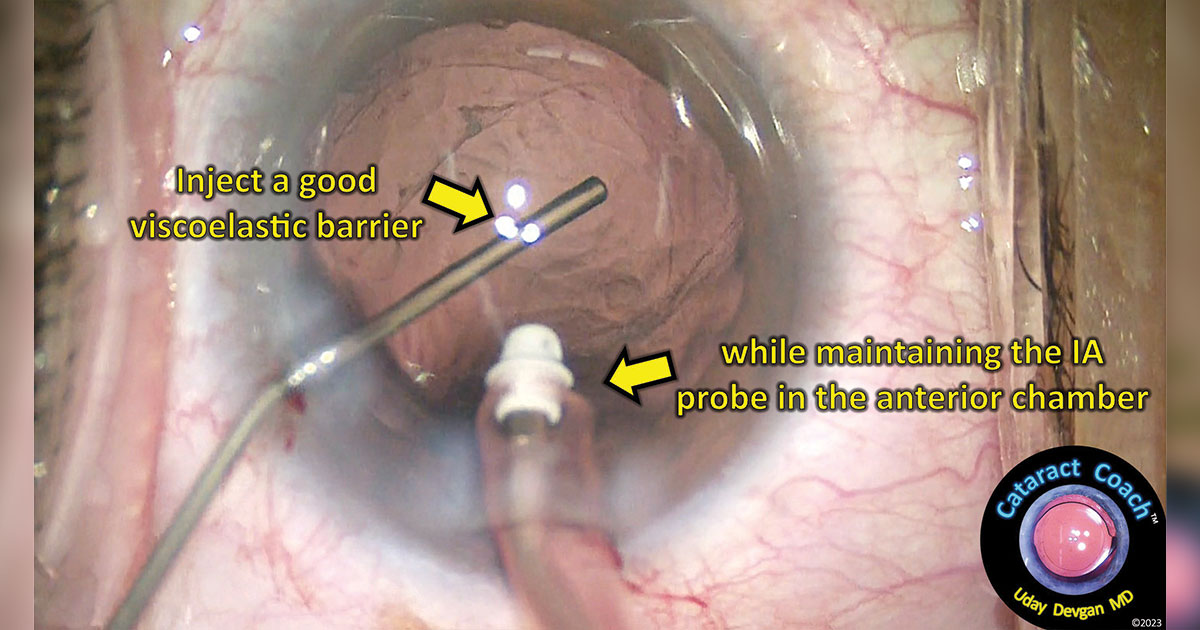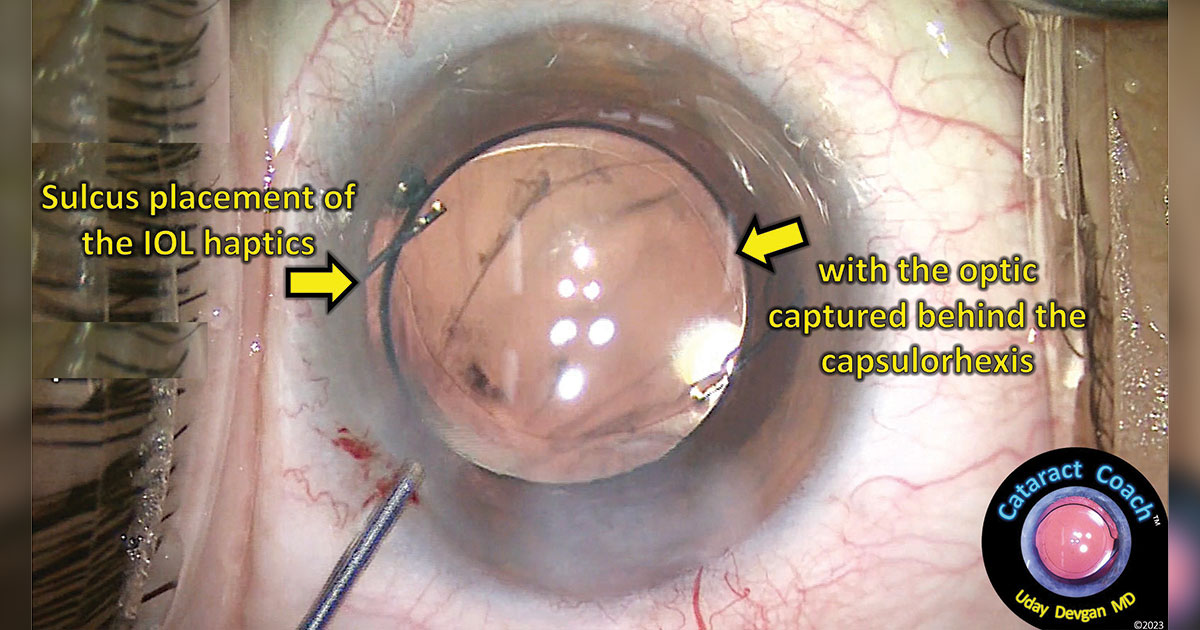Surgeon encounters posterior capsule rupture during cortex removal
Experienced surgeons are more likely to encounter a posterior capsule rupture during cortex removal than nucleus extraction.
This may be because we are aspirating lens material in close proximity to the delicate posterior capsule, which is just 4 µm thin centrally. Early detection and prompt reaction can ensure a great outcome for the patient despite this complication.


In the case presented here, our patient is undergoing routine cataract surgery in which a 5-mm capsulorrhexis was created and the nucleus removed using the phaco chop technique. After the cortex was removed, the irrigation-aspiration (IA) probe was used to aspirate any remaining small strands of lens material that were adherent to the posterior capsule. Upon aspiration of the last strand, the posterior capsule abruptly ruptured, creating a large opening that extended for the entire lens diameter (Figure 1).
The immediate reaction at this point must be to maintain infusion while stopping the vacuum by moving the foot pedal from position 2 to position 1 while keeping the IA probe inside the anterior chamber. It is important to immediately stop the vacuum because we do not want to engage vitreous in the aspiration port, which would cause disruption of the anterior hyaloid face and prolapse of vitreous. It is important to maintain the pressure inside the anterior segment by keeping the infusion of balanced salt solution continuous via foot pedal position 1. If we allow the anterior chamber to depressurize by removing the IA probe at this point, then we will get vitreous prolapse. This is because the pressure in the vitreous cavity will be higher than the pressure in the anterior and posterior chambers, thus causing the vitreous to prolapse forward.
With the eye still pressurized with the infusion from the IA probe, the other hand is used to inject viscoelastic via the paracentesis incision. The left hand injects the viscoelastic over the anterior hyaloid face to create a barrier that will prevent vitreous prolapse into the anterior segment. The IA probe is kept in the eye with infusion on until the viscoelastic injection begins, at which time the infusion is turned off by going to foot pedal position 0, and then the IA probe can be withdrawn as more viscoelastic is injected (Figure 2).

At this point, careful examination reveals that we have a large posterior capsule rupture with an intact capsulorrhexis. There does not appear to be any vitreous prolapse, and the anterior hyaloid face is still intact. This means that performing an anterior vitrectomy is not needed. Making this call is challenging for beginning surgeons at this point because the eye is full of viscoelastic, and therefore, instilling triamcinolone to check for the presence of vitreous in the anterior segment is not likely to work well.
The decision was made to implant a three-piece IOL with the haptics placed in the sulcus with the optic captured behind the capsulorrhexis (Figure 3). Because the optic is now behind the anterior lens capsule, its effective lens position in the eye is about the same as in-the-bag placement, and in that regard, no adjustment to the IOL power is needed. However, our originally planned IOL was a single-piece acrylic IOL with an A-constant of 119.2 while this three-piece acrylic IOL has an A-constant of 118.7, so we need to drop the IOL power by 0.5 D to get the same refractive outcome. Remember that the difference in A-constants equals the difference in IOL power if placing the IOL in its intended position in the eye. We also enlarged the incision slightly to account for the larger injector cartridge tip of the three-piece IOL.

After the IOL is secured in position, button-holed through the capsulorrhexis, there is now a physical barrier to prevent vitreous from coming forward into the anterior segment. We can use the IA probe with gentle parameters such as lower flow and lower vacuum to aspirate the viscoelastic from the anterior chamber. The pupil is then constricted with a miotic agent, and a small aliquot of triamcinolone is injected to ensure there is no vitreous prolapse. A prophylactic intracameral antibiotic is also instilled to reduce the risk for endophthalmitis.
This patient had a great recovery from this complication and achieved excellent vision as per the original surgical plan. Every experienced surgeon will have complications like this posterior capsule rupture, and with a quick reaction and appropriate recovery, we can overcome these challenges.
A video of this surgery can be found at https://cataractcoach.com/2023/ 10/18/1990-quiz-how-do-you-safely-finish-this-case/.
